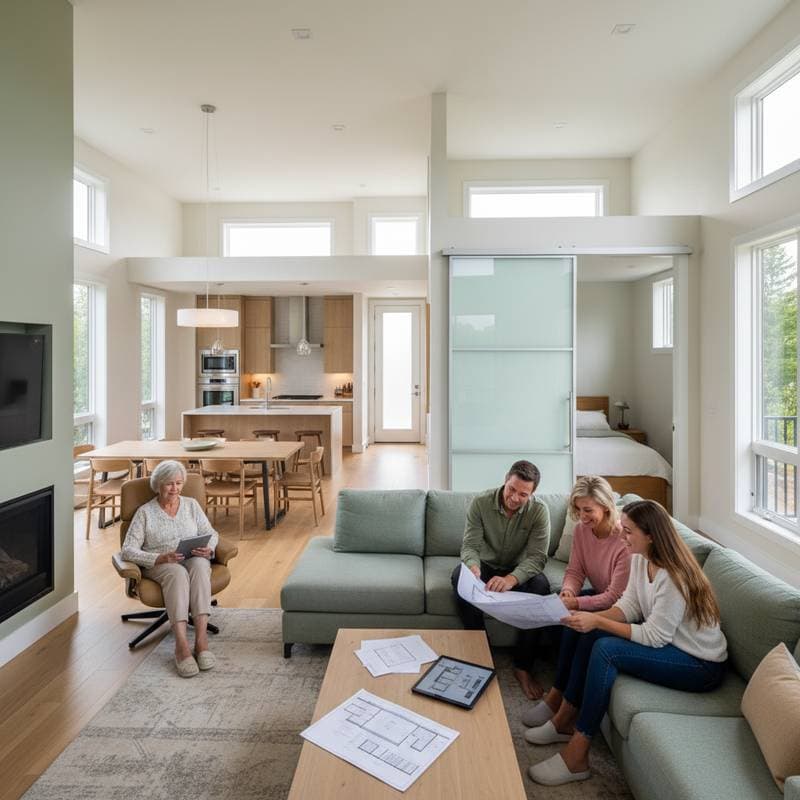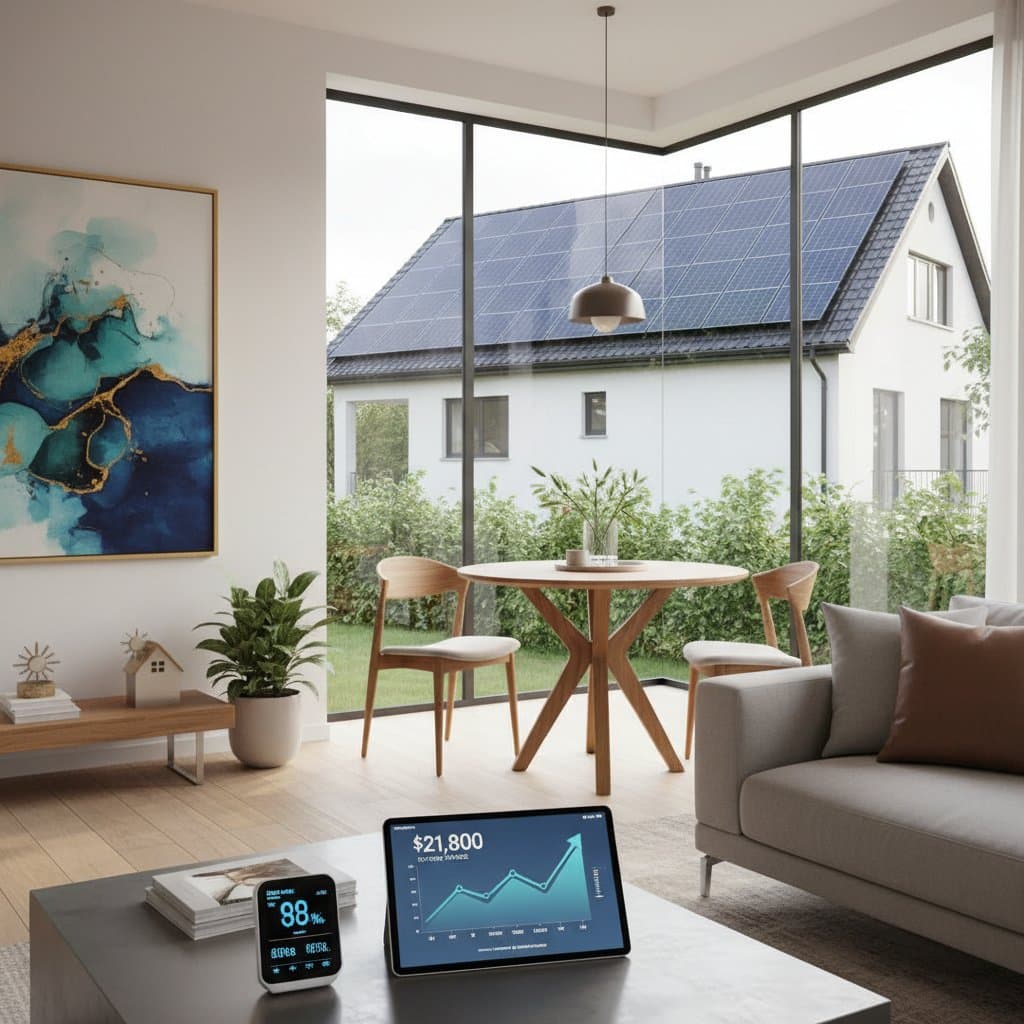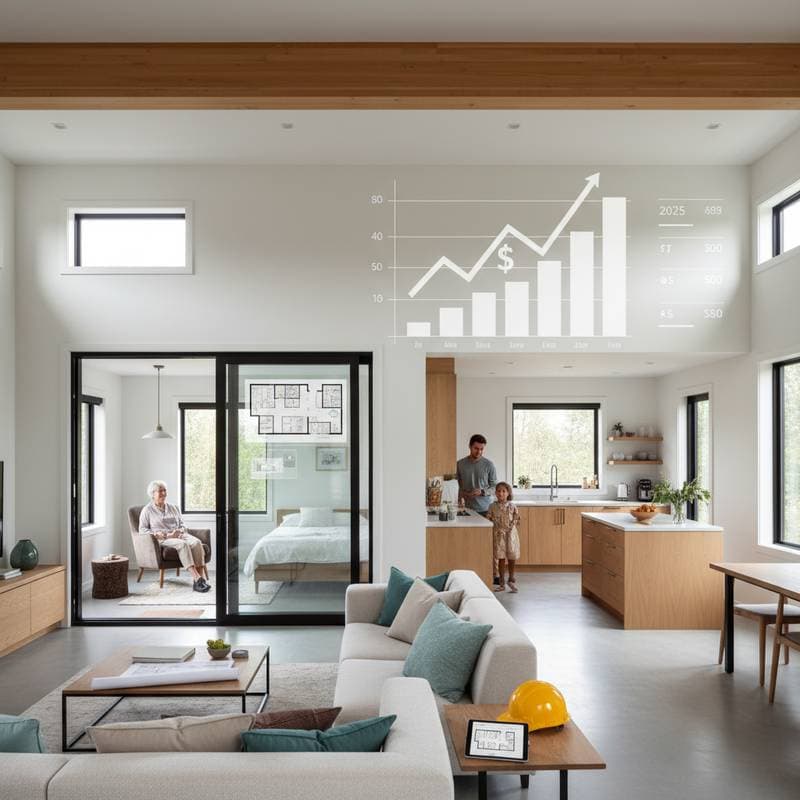Multigenerational Living: Renovation Costs in 2025
Converting a home for multigenerational living typically requires an investment between $85,000 and $320,000. This range depends on factors such as the size of the project, the existing layout, and local labor rates. Homeowners often choose between constructing an Accessory Dwelling Unit (ADU) or transforming existing space into an in-law suite to accommodate multiple generations under one roof.
Understanding Multigenerational Living
Multigenerational living involves more than one generation residing in a single property, each with access to separate sleeping quarters, cooking facilities, and bathroom areas. Common configurations include in-law suites, basement apartments, and Accessory Dwelling Units (ADUs). These setups foster family closeness while preserving individual privacy and independence.
Indicators That Multigenerational Renovation May Be Necessary
Consider renovation if certain situations arise in your household. For instance, aging parents or adult children prepare to move in for long-term care or to share expenses. An unused basement or garage presents an opportunity for conversion into functional living space. If the current home layout creates stress or safety concerns during shared living, updates become essential. Homeowners also pursue these projects to generate rental income that offsets mortgage payments. Finally, planning to age in place often prompts the addition of a ground-floor suite for future accessibility.
Breakdown of Renovation Costs
The national average cost for multigenerational renovations falls between $85,000 and $320,000. A median project, such as a moderate interior conversion or a small attached suite, typically totals around $180,000. These figures account for materials, labor, and compliance with building standards in 2025.
Detailed Cost Components
The following table outlines key line items and their typical ranges, along with influencing variables.
| Line Item | Typical Range | Notes and Variables |
|---|---|---|
| Design and Permits | $6,000 - $20,000 | Covers architectural plans and municipal approvals |
| Site Prep and Foundation | $10,000 - $40,000 | Increases for detached ADUs or challenging terrain |
| Framing and Structure | $25,000 - $60,000 | Varies by overall size and integration with existing roof |
| Electrical and Plumbing | $15,000 - $40,000 | Rerouting utilities for separate units adds expense |
| Kitchen and Bath | $20,000 - $65,000 | Selections in cabinets and fixtures influence the total |
| Finishes and Flooring | $8,000 - $25,000 | Premium or durable options elevate costs |
| HVAC and Insulation | $6,000 - $18,000 | Separate zoning or systems may prove necessary |
| Accessibility Upgrades | $2,000 - $15,000 | Includes ramps, lifts, wider doors, and grab bars |
Primary Cost Influences
Several elements drive the final expense of a multigenerational renovation. Location plays a significant role, as labor and permit fees fluctuate by region. Detached structures generally incur higher costs than attached or interior conversions. The distance required for new utility lines, such as water or sewer, substantially increases expenses. Complex designs involving roof modifications, basement excavations, or hillside adaptations demand more labor. Selecting high-quality materials, like energy-efficient windows or soundproofing elements, enhances long-term value but raises the upfront investment.
Essential Safety and Building Code Considerations
Safety remains paramount in multigenerational projects. Install smoke and carbon monoxide detectors in every unit to protect occupants. Ensure each bedroom features at least one egress window or exterior door for emergency escape. Equip kitchens and bathrooms with GFCI outlets to prevent electrical hazards in wet areas. Maintain fire separation between units using rated drywall or fire-rated doors. Professionals must verify that the existing electrical panel supports the additional load without upgrades.
Accessibility Features to Incorporate
Incorporate universal design principles to support all ages and abilities. Doorways should measure at least 32 inches wide for easy passage. Replace traditional knobs with lever-style handles for simpler operation. Design entries without steps or with low-threshold transitions to accommodate mobility aids. Install grab bars and reinforce bathroom walls for future support needs. Provide adequate lighting along stairs and pathways to minimize fall risks.
Regional and Environmental Influences
Local conditions shape the approach to multigenerational renovations. In cold regions, enhance insulation and use frost-protected foundations, paired with triple-pane windows for energy efficiency. Hot and humid areas require robust moisture control and pest-resistant materials to prevent mold and damage. Arid climates benefit from light-colored finishes that reflect heat and reduce cooling demands. Coastal marine zones demand corrosion-resistant fasteners and siding to withstand salt exposure. Mixed-humid climates emphasize balanced ventilation systems to manage indoor humidity levels.
Permitting and Zoning Insights
Building codes vary widely. Certain cities permit detached ADUs as a matter of right, streamlining approvals, while others mandate conditional use reviews. Confirm requirements for separate utility meters or additional parking spaces before proceeding. Consult local authorities early to avoid delays.
Material Recommendations by Climate
Wood framing suits most environments but requires termite treatments in humid areas. Concrete block or insulated panels offer superior performance in regions prone to hurricanes or wildfires. Metal roofing provides durability against wind and longevity in coastal settings.
Optimal Timing for Projects
Initiate design phases during winter months to allow for thorough planning. Schedule construction for spring or summer in most areas to sidestep weather interruptions. In warmer climates, fall timing often shortens contractor availability waits and lowers peak-season rates.
Key Terminology
- Accessory Dwelling Unit (ADU): A secondary housing unit on the same lot as a primary residence, complete with its own kitchen and bathroom.
- In-Law Suite: A dedicated living space within or adjacent to the main home, designed for extended family members.
- Egress Window: An oversized window that allows safe emergency exit from a room.
- GFCI Outlet: A ground-fault circuit interrupter that automatically shuts off power in the event of electrical faults, especially in moist environments.
- Grab Bar: A secure rail in bathrooms that provides support for stability.
- HVAC: The system responsible for heating, ventilation, and air conditioning.
- Permit: Official authorization needed for structural, plumbing, or electrical modifications.
- Soundproofing: Techniques and materials that minimize noise transmission between living areas.
- Universal Design: Principles that create spaces accessible and usable by people of all ages and abilities.
- Zoning: Regulations governing land use and allowable structures on a property.
- Contingency Fund: A reserved portion of the budget to cover unforeseen expenses or discoveries during construction.
Steps to Initiate Your Multigenerational Renovation
Begin by assessing your home and family needs to determine the ideal configuration, such as an ADU or in-law suite. Consult a licensed architect or contractor experienced in multigenerational projects to develop detailed plans and obtain permits. Establish a realistic budget that includes a 10-15 percent contingency fund for surprises. Prioritize accessibility and safety features from the outset to ensure long-term usability. During construction, maintain open communication with your team to stay on schedule and within costs. Once complete, these renovations not only strengthen family bonds but also enhance property value and provide flexible living options for years to come.



